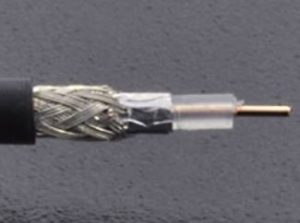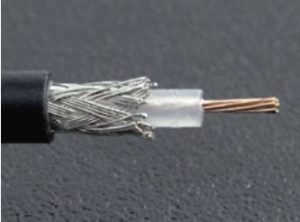Difference between wire and strand
If you deal with the subject of cables, sooner or later you will come across the terms wire and strands. But what exactly is the difference or are they actually describing the same thing? This article takes a closer look at the main features of wires and strands and identifies the different areas of application.
Wires:

A wire consists of only a single conductor, often made of copper or steel, which is partly dependent on the diameter of the cable. For very thin cables, a steel wire is often used to ensure stability, which is often silver-plated or copper-plated. A copper wire, sometimes tinned or silver-plated, is often used for thicker cables and offers greater flexibility, although it is nowhere near as flexible as stranded wire.
Wires are generally solid and therefore only slightly bendable, making them best suited for fixed installation. This is because there is no risk of overloading due to frequent movement. The advantages of a solid wire are generally a lower attenuation value and a higher electrical load capacity compared to cables with a stranded inner conductor.
Strands:

A stranded wire is a large number of very thin individual wires, sometimes only a fraction of a millimeter in diameter, which are braided together to form a single inner conductor. This ensures a particularly high degree of flexibility, which increases with the number of intertwined individual wires. In contrast to solid wires, stranded wires are often used in moving applications where the cable is frequently bent.
Another advantage of stranded wires over wires is the reduced risk of conductor breakage, as the cable can still be used even if a certain number of the individual wires are broken.
All in all, it can be said that the correct choice of inner conductor depends heavily on the intended application of the cable. However, this should not be the only decisive point, as other factors such as the material of the dielectric or the outer sheath also play a role in selecting the correct cable.
Cable assemblies in our Cable configurator:
Choose from over 500 different connecotrs as well as over 140 different types of cables to suit the combination you need.
With our interactive cable configurator, you can easily assemble your individual cable using pictures and related information.
Coaxial lines:
RG178 | RG196 A/U | RGL196 LowNoise | KAPTON 1.45MM | KAPTON 1.60mm | LN5001 LowNoise | Sucoform 86 | RG174 A/U | RG174 LSNH | RG188 A/U | RG316 /C | RG316 /U | RGL316 LowNoise | RG316D – RD316 | ENVIROFLEX 316D | RADOX_RF_316_D | CLF100 | LMR 100A | LMR 100A FR | LN5002 LowNoise | BEDEA MXR 0.45/1.4L, LowNoise | PE-P086 | Multiflex 86 | Sucoform 86 FEP | Sucoform 86 LSFH | K 02252 D | SS405 | Multiflex 141 | Sucoform 141 | Sucoform 141 FEP | PE-P141 | SS402 | RG58 | RG058 | arnoflex 58 LSNH | RG58 PUR | RADOX_RF_58 | RADOX_RF_142 | Enviroflex 142 | RG142 | LL142 | RG223 U | Enviroflex 400 | RADOX_RF_400 | RG400 | H-155 PE | H-155 FRNC | H-155 PVC | arnoflex 155 PE | WC-55 PE | HyperFlex 5 | CLF195 | CLF200 | CLF240 | LMR 195 | LMR 195 FR | LMR 195 UF | HF 195 ZH | LMR 200 | LMR 240 | LMR 240 FR | LMR 240 UF | arnoflex 240 PE | HF 240 ZH | Airborne 5 | Aircell 5 | Aircell 5 Heatex | 7806A | bda MXR 0,5/2,95 | S_04212_B | S_04272_B | SPUMA_240-FR-01 | Aircell 7 | Aircell 7 Heatex | arnoflex 7 UF | HIGHFLEXX 7 | SCF14-50J | RG213 /U | RG214 /U | arnoflex 214 LSNH | LCF14-50J | LCF14-50JFN | LMR 400® | LMR 400 FR | LMR 400 UF® | HF 400 LSNH | HyperFlex 10 | Ecoflex 10 | Ecoflex 10 Plus | Ecoflex 10 Plus Heatex | Ecoflex 15 | Ecoflex 15 plus | Ecoflex 15 plus Heatex | LMR 600 | LMR 600 FR | LCF12-50J |